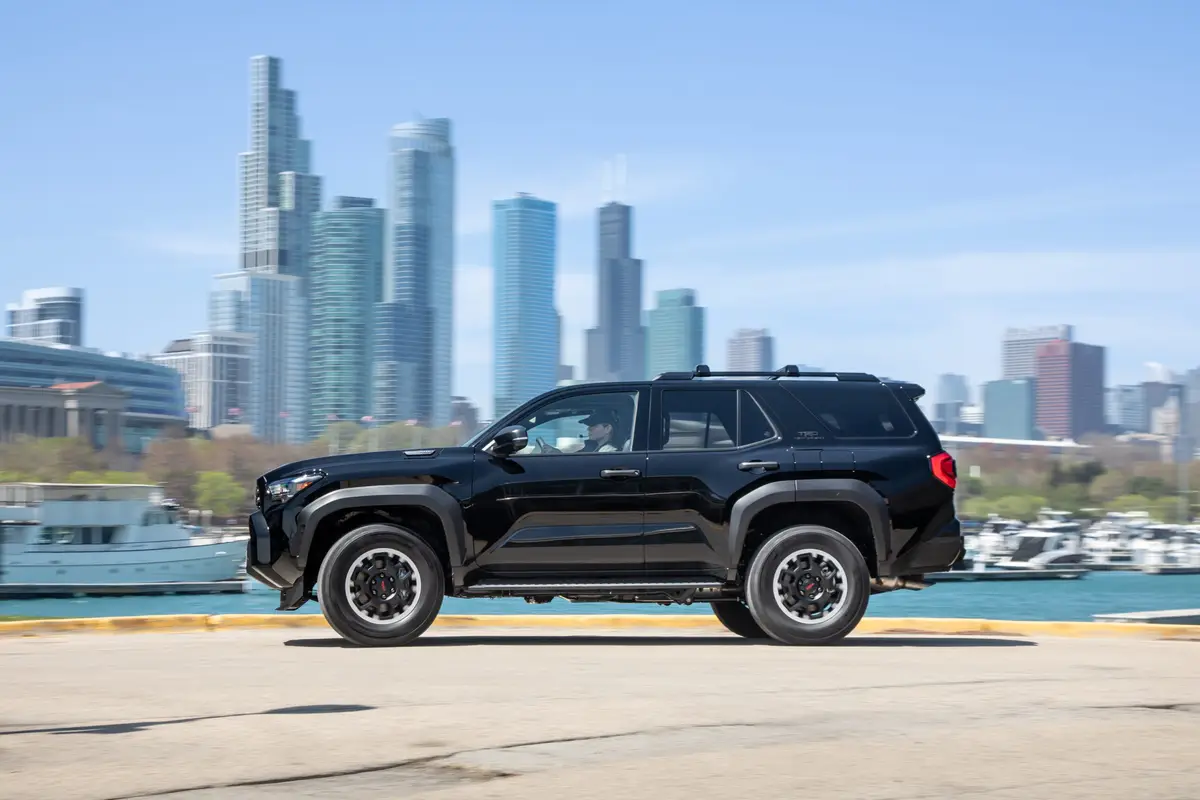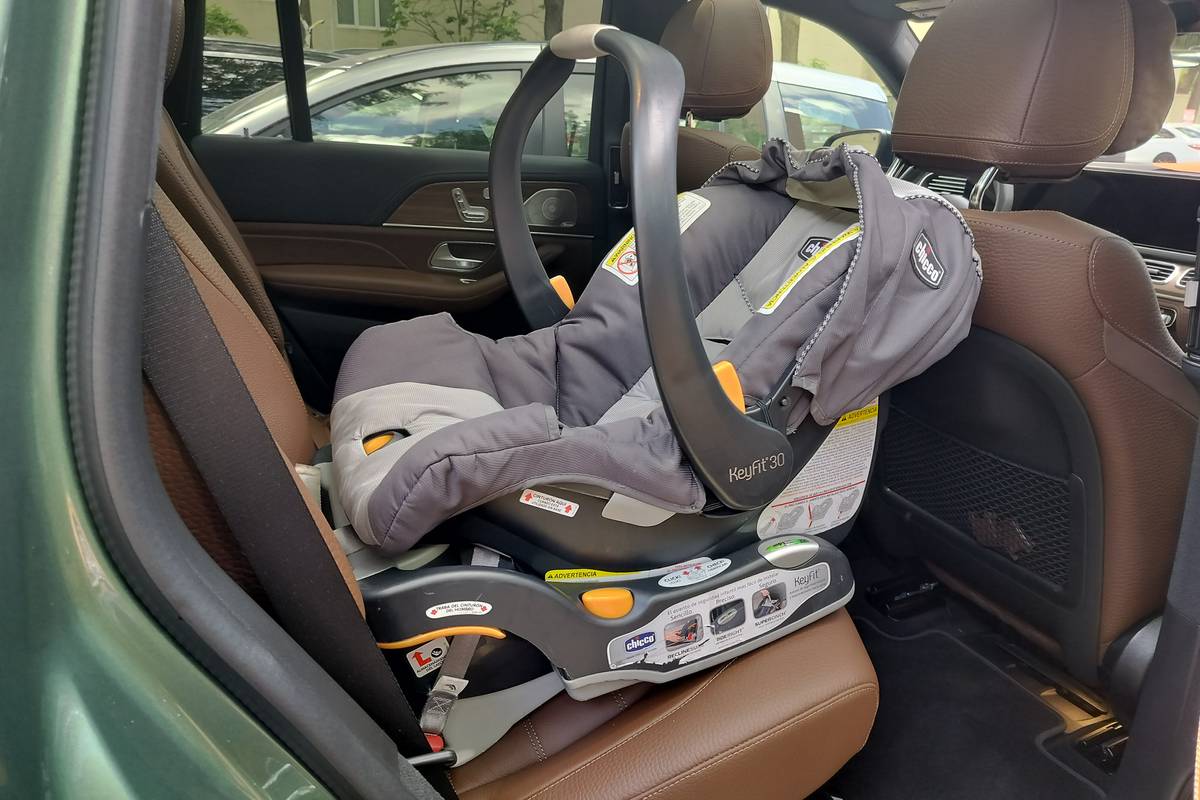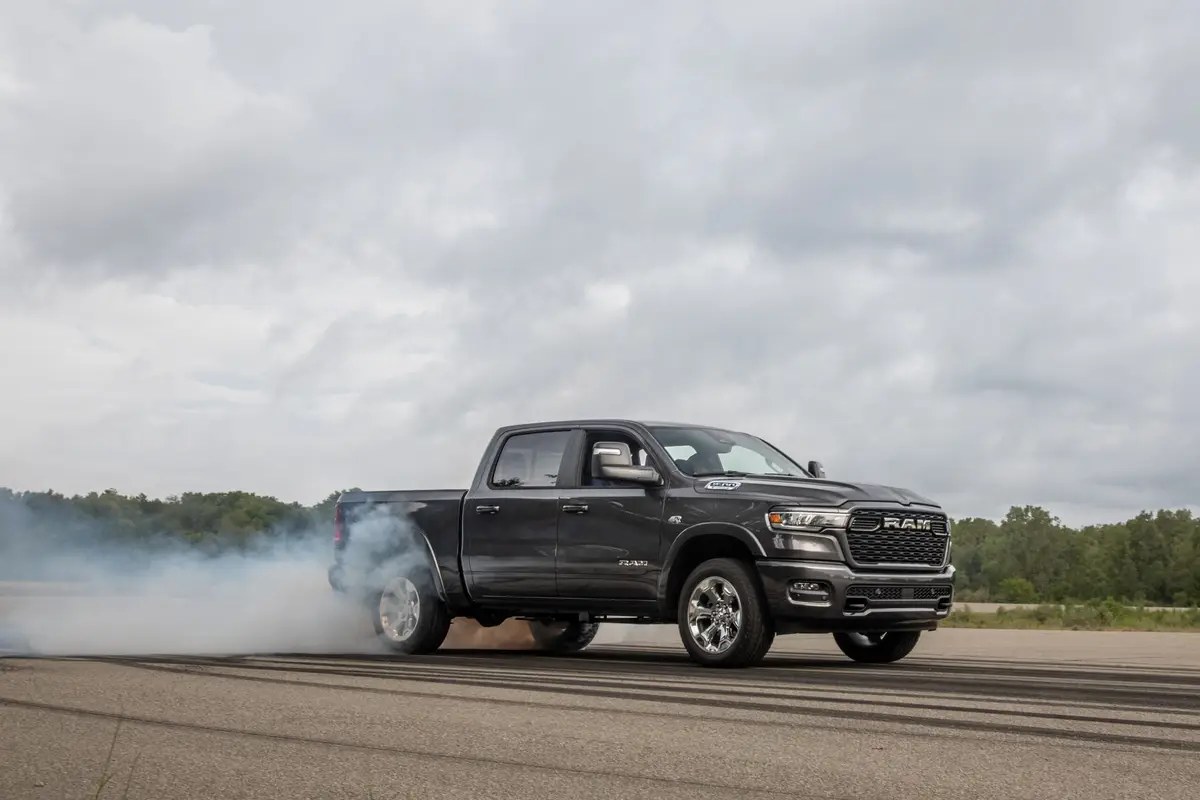Our view: 2009 Chrysler Aspen Hybrid

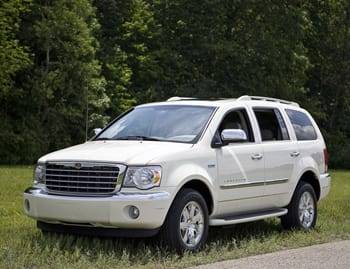
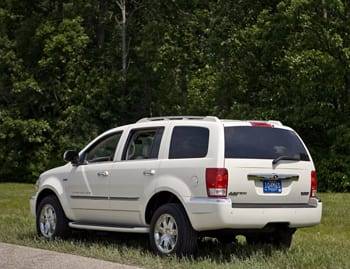
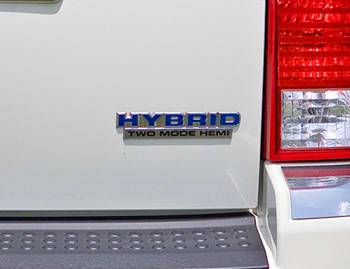
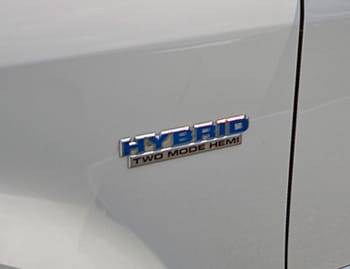
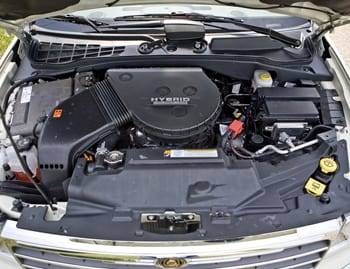
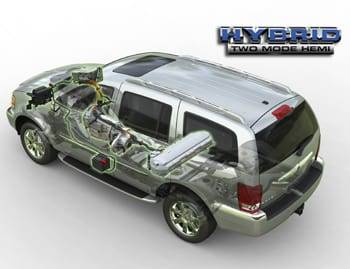
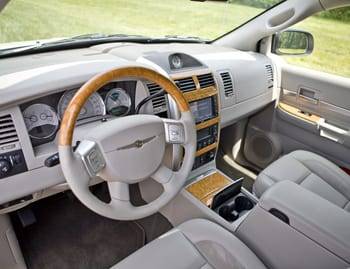
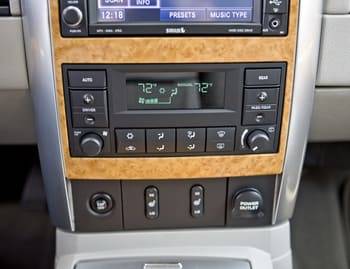
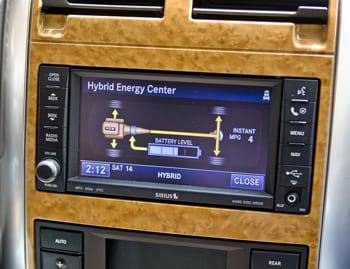
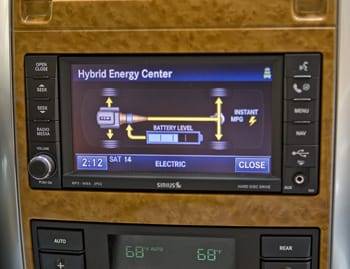
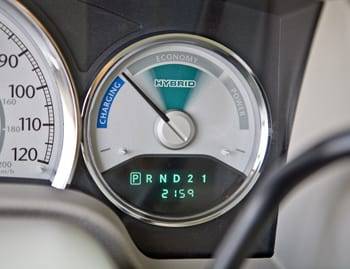
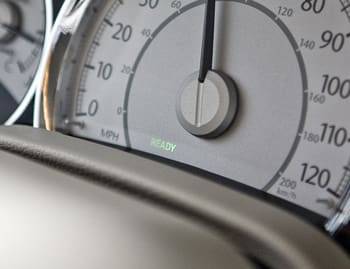
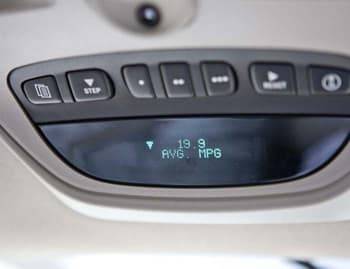
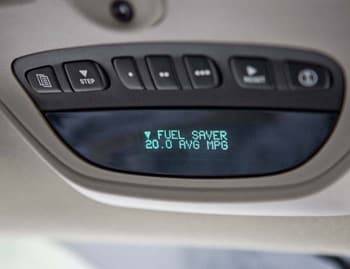














The day couldn’t come soon enough: Chrysler, a company paying the piper for its heavy mix of gas-hogging trucks and SUVs, has finally landed a hybrid. Technically, it has two — the Dodge Durango Hybrid and the Chrysler Aspen Hybrid — but they’re roughly identical, and they come with all the expected tricks: electric-only low-speed cruising, whisper-silent idling and regenerative brakes.
The Aspen Hybrid manages all this to the tune of 19/20 mpg city/highway, versus 13/18 mpg for an equivalent non-hybrid Aspen. With a starting price under $45,000, it undercuts GM’s 20-mpg Chevy Tahoe and GMC Yukon hybrids by $7,000 and handily out-tows the hybrid SUVs from Toyota and Ford. On value and capability alone, the Aspen Hybrid might work for some, but I can’t recommend it outright — it has all the faults of the regular Aspen, and the hybrid drivetrain feels a few steps short of primetime.
The Aspen Hybrid comes in a single, well-equipped Limited trim. Four-wheel drive is standard, and power comes from Chrysler’s 5.7-liter Hemi V-8, coupled with an elaborate two-mode electrically variable transmission. Cabin features are comparable to those of the Durango Hybrid, which is priced about the same. This review covers attributes unique to the Aspen Hybrid; my thoughts on its seating and interior quality can be found in the non-hybrid Aspen review here.
Discreet Styling
SUV drivers intent on proving their environmentalism should get one of GM’s hybrids — or flaunt a Prius during the day and keep the gas-guzzler garaged until dusk. Unlike the Tahoe and Yukon hybrids, the Aspen Hybrid doesn’t broadcast its credentials. Its styling falls more in line with the Toyota Highlander and Ford Escape hybrids, which look similar to their non-hybrid counterparts.
The requisite hybrid badges adorn the Aspen’s tailgate and side panels, but there are only three of them — none up front — and all are small. The sheet metal is identical; there’s not even a new grille, much less the elaborate bumper extensions the Tahoe and Yukon hybrids employ. Eighteen-inch chrome wheels come standard; the regular Aspen has 18- or 20-inchers.
Cabin Gadgets
Being a “full” hybrid, the Aspen Hybrid can cruise around on electric or engine power or a combination of the two. “Mild” hybrids like the Chevy Malibu Hybrid and Saturn Vue Green Line shut the engine off at idle but can’t run on electric power alone.
Accordingly, the standard navigation system has an information screen showing the flow of power among the V-8, the transmission-embedded motors and the high-voltage battery pack. It also monitors the battery’s charge. There’s a real-time gas mileage readout with an indicator that shows whether you’re driving on electric power, recharging the battery or using the engine. All told, the screen is more informative than the center display on the Yukon and Tahoe hybrids, which shows power flow but not much else, but it doesn’t go as far as the Escape and Highlander hybrids, which both offer a second screen that charts mileage history over the past 15 to 30 minutes.
Alas, the Aspen Hybrid’s screen sits too low in the dash to check regularly; there is, however, an overhead readout above the windshield that shows cumulative gas mileage. On electric-only power or when the V-8 is in four-cylinder mode, the display says “Fuel Saver” — a helpful indicator to encourage frugal driving habits. It’s also eminently easier to reference than the Tahoe Hybrid’s similar V8/V4 readout, which sits below its tachometer. (Warning: Automotive writers agree about as often as Congress. Assistant editor Joe Bruzek called the overhead location “horrible.”)
Speaking of tachometers, there isn’t one. In its place is a unique gauge with zones for battery charging, economic driving and stronger acceleration. The economy section has a green zone within it that supposedly indicates the best mix of fuel efficiency and power. It serves a similar purpose to the auxiliary power/assist gauges in several other hybrids, but here it supplants the tachometer entirely. That drew a mixed response. One editor mentioned he’d rather have a conventional tach to know exactly how hard the engine is working; the Escape, Tahoe and Yukon hybrids all provide one.
How it Drives
Like its full-hybrid peers, the Aspen Hybrid can accelerate up to 25 mph or so in electric-only mode. Doing so requires a light foot on the accelerator, but there’s enough power to make it practical for certain situations. I was able to poke along in bumper-to-bumper freeway traffic without waking the engine, and the Aspen’s high driving position helps you plan momentum for the pace a few cars ahead. In a Prius, you’re at the mercy of whoever sits in front of the hybrid hatch.
The most noticeable transition from electric-only to engine power happens at stoplights or other idle moments, where the battery pack may require the engine to turn on for recharging duties. (Hybrid-car batteries recharge using the vehicle’s momentum to generate electricity and help slow the car down — hence the “regenerative braking” effect — or simply by drawing a charge off the running engine.) When in motion, the transition is fairly seamless. The whirring motors give way to a low-pitched engine note, and the gas pedal imparts a more substantive feeling of power. In stop-and-go situations where you need to accelerate immediately, the Aspen sometimes delays a few moments before the electric motors call for reinforcements. The same thing happens in all full hybrids, though this model seems less adept at overcoming it. One way to cheat the lag is to activate the Tow/Haul mode on the column shifter, which effectively locks out electric mode and keeps the engine running. I found it especially useful — if not particularly fuel-efficient — for making left turns when there was a gap in oncoming traffic. The fact that I used it so often, however, is an indictment of the length of lag.
Even less acceptable is the power lag on highways, where braking at just about any speed cuts engine power and sends the drivetrain into a dormant state of battery recharging. More than once I found myself in a line of decelerating cars, wanting to switch to a faster-moving lane. Tapping the brakes, finding a gap and accelerating to merge, I’d have to wait a moment for the engine to clock back in — and inevitably scramble to make up the lost acceleration.
When the cavalry does arrive, though, it comes in force. Chrysler says the Aspen Hybrid’s gas/electric drivetrain packs a combined 385 horsepower, versus 335 hp in the regular 2008 5.7-liter Aspen. The resulting acceleration, once you coax the SUV out of electric mode, is swift and, thanks to a quick-thinking transmission, seamless.
The transmission — jointly developed by BMW, Chrysler, GM and Mercedes-Benz — packs two embedded electric motors and a number of variable and fixed gear ratios. The Tahoe and Yukon hybrids use the same system, though theirs is mated to a 6.0-liter V-8. It works in two modes, the first at lower speeds on electric or engine power, the second at higher speeds on a combination of electric and eight- or four-cylinder engine power. You won’t notice any transition. Perhaps most impressive, I found, was that the V-8 could maintain 50 or 60 mph up slight highway inclines in four-cylinder mode. Most cars I’ve driven with cylinder deactivation shut down half of theirs when coasting or, at the absolute maximum, maintaining midrange speeds on flat ground. Chrysler says the Aspen Hybrid’s drivetrain lends enough electric assist at cruising speeds that the engine can go to four-cylinder mode more often than the non-hybrid Aspen, whose Hemi engine also offers cylinder deactivation. I believe it.
Four-wheel-disc antilock brakes are standard. Regenerative braking serves to charge the battery and slow the vehicle under most braking situations, while the actual disc brakes pitch in when stronger braking is needed. That means that, as in most hybrids, the lifespan on the brake pads should be significantly longer than a non-hybrid’s, so you won’t have to shell out cash for brake jobs as often. Unfortunately, the Aspen Hybrid’s brakes have an artificial, bricklike pedal feel, yielding inconsistent responses and making smooth stops difficult. Listen closely, and there’s often a slight high-frequency ring under light braking; Chrysler says it’s a result of the regenerative function. Regenerative brakes across most hybrids exhibit some of these tendencies, but this is among the worst — especially compared to the Yukon and Tahoe hybrids, whose brakes feel impressively natural.
Other driving aspects mimic the non-hybrid Aspen. The ride is floaty but relatively quiet, and the steering wheel turns with SUV-appropriate, well-assisted smoothness. Lane changes and off-ramps yield plenty of body roll, and around town the suspension reverberates over most major bumps. For overall ride quality, my money would go to the Tahoe and Yukon.
The Numbers
The EPA has yet to publish final mileage figures for the Aspen Hybrid, but Chrysler estimates 19/20 city/highway, a 25 percent improvement over a comparable four-wheel-drive Aspen. Over a workweek of driving, the mileage display said my urban trips returned anywhere between 15 and 20 mpg. On the weekend, an editor took the Aspen Hybrid 280 miles between Cars.com’s Chicago offices and Michigan and reported 19.3 mpg overall. In one town he was able to cruise more than a mile in electric mode.
The EPA pegs the Tahoe and Yukon hybrids at 20/20 city/highway with four-wheel drive. We observed 20.5 mpg in a nine-hour city drive last spring. The four-wheel-drive Highlander and Escape hybrids fare much better — 26 and 28 mpg overall, respectively — but both are smaller, and neither one comes close to towing this much.
| Towing vs. Guzzling | |||||||||||||||||||
|---|---|---|---|---|---|---|---|---|---|---|---|---|---|---|---|---|---|---|---|
| 2009 Chrysler Aspen Hybrid | 2008 Chrysler Aspen 5.7L | 2008 Chevrolet Tahoe Hybrid | |||||||||||||||||
| Starting price | $44,770 | $36,770 | $52,395 | ||||||||||||||||
| Federal tax credit | $1,800 (est.) | — | $2,200 | ||||||||||||||||
| Gas mileage (city/hwy., mpg) | 19/20 (est.) | 13/18 | 20/20 | ||||||||||||||||
| Required fuel | Regular | Regular | Regular | ||||||||||||||||
| Max. towing capacity (lbs.) | 6,000 | 8,700 | 6,000 | ||||||||||||||||
| Source: Automaker data for models with 4WD. Prices exclude destination charge. | |||||||||||||||||||
Aspen Limitations
Physical differences between the hybrid and non-hybrid are few. The battery pack sits under the second-row seats, and Chrysler spokesman Nick Cappa said there are no changes in ground clearance or interior volume between the two models. (According to Chrysler’s own specifications, ground clearance under the front and rear axles is down slightly for the hybrid, but Cappa said that’s likely due to revised ratings from year to year.) The cabin also remains the same, which is unfortunate because, while comfortable, it trails the class in most respects. For specifics I’ll refer you to my regular Aspen review, but suffice it to say dashboard materials and overall build quality are generally disappointing, and Chrysler’s electronic frills — among them a sharp navigation display and onboard MP3 hard drive — can’t bring it up to par.
Safety
The Insurance Institute for Highway Safety has not yet crash tested the Aspen. Standard safety features include rollover-sensing side curtain airbags across all three rows of seats, antilock brakes, traction control and an electronic stability system. A backup camera and rear parking sensors are also standard.
Features, Pricing & Tax Incentives
At $44,770, the Aspen Hybrid comes loaded: Leather upholstery, heated power seats and a navigation system are standard. With equivalent features, a 5.7-liter four-wheel-drive Aspen comes to about $41,000. Chrysler projects a federal tax credit of $1,800; that goes straight into your return, as opposed to a tax deduction that merely lowers taxable income. Throw it in, and the Aspen Hybrid’s $1,970 premium is well worth paying: At $3.93 a gallon for regular — AAA’s July 30 national average — driving 15,000 annual miles on a 55/45 city/highway mix (based on the EPA’s combined estimates) would recoup the premium through gas savings alone in a reasonable 2.4 years.
If you could live with fewer frills, a four-wheel-drive 5.7-liter Aspen could be had for under $37,000; at that, the difference in post-tax savings takes a not-so-reasonable 7.5 years to recoup. Chrysler says the hybrid and non-hybrid models will get identical incentives — right now there’s $4,000 cash back on ’08 models — but in these economic times, I suspect a local dealer would be less inclined to cut you the sort of deal on a hybrid SUV that he would on its 15-mpg counterpart.
Aspen Hybrid in the Market
In a market hungry for higher-mileage anything, Chrysler should have no problem peddling Aspen Hybrids to the trailer-and-boat crowd. I question whether its appeal goes beyond them, though, and that’s because the Tahoe and Yukon hybrids feel eminently more refined.
The Aspen Hybrid is less expensive, to be sure, but it doesn’t stand out over GM’s pair in any major way. Low prices work when your product is relatively competitive, but the three-year-old Aspen never leapfrogged anything to begin with. The hybrid drivetrain gives it a few new tricks, but in the end it’s too much of an old dog.
| Send Kelsey an email |

Former Assistant Managing Editor-News Kelsey Mays likes quality, reliability, safety and practicality. But he also likes a fair price.
Latest news
